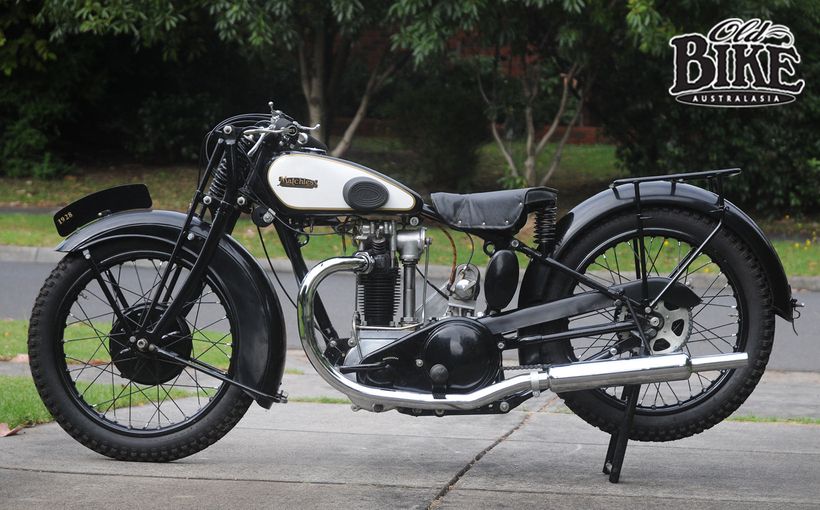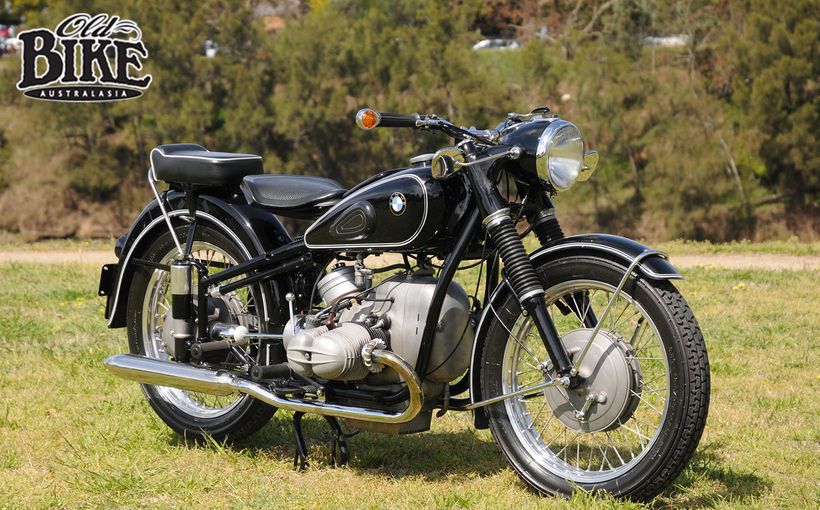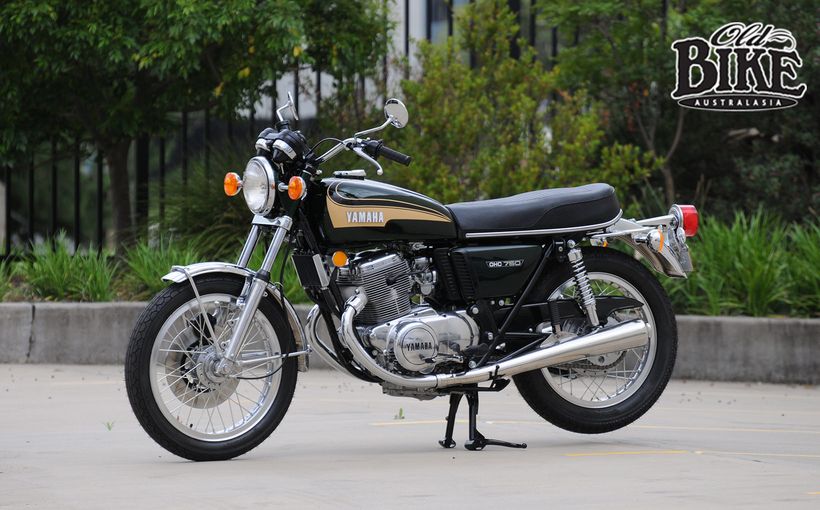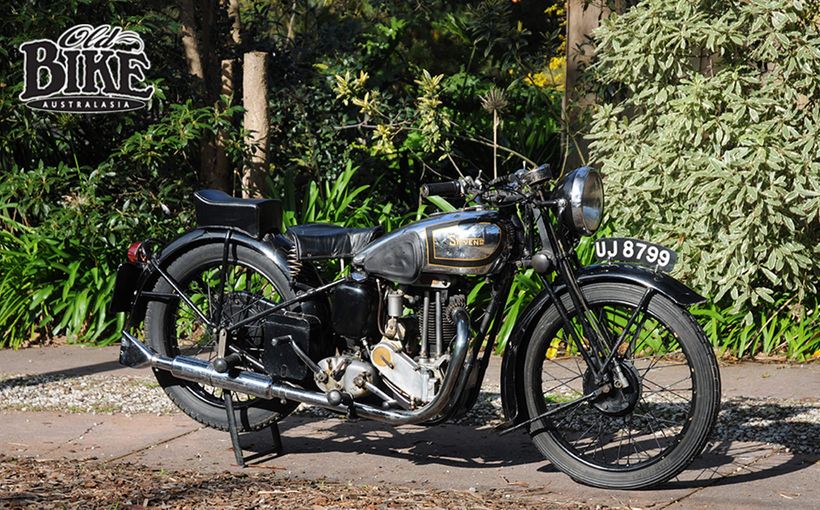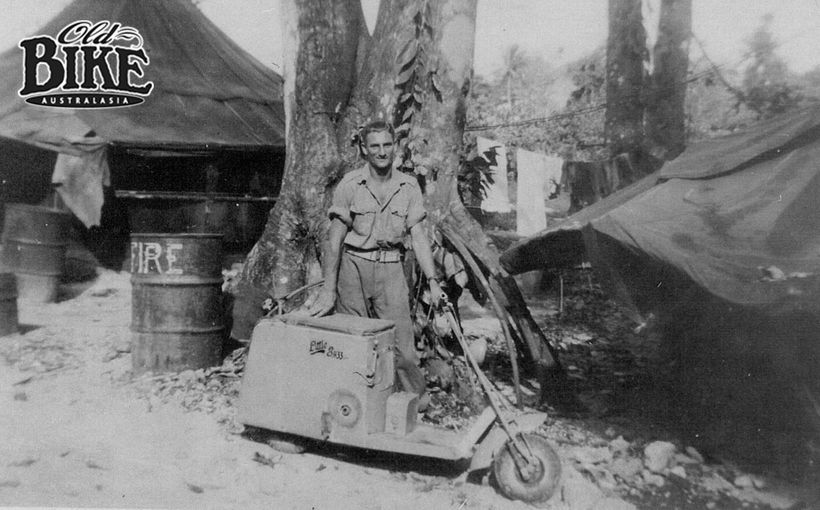Old Bike Australasia: BMW R695 - The ultimate flat twin?

Reliable can in some circumstances, also mean slightly boring. In BMW’s case, their post-war flat twins were unquestionably reliable, and jolly robust too, but hardly the type of machine to set you drooling, nor make the hairs on the back of your neck stand up. BMW needed a shot in the arm, in more ways than one. Six years after the war, the company was still doing it tough, but at the 1951 IFMA Motorcycle Show in Frankfurt, they threw down a marker with the announcement of a brand new 594 cc engine, designated the M268, installed in a model which went into production the following year as the R68. The actual designation of the production engine was M268/1, and its 35 hp output, the factory claimed, was sufficient to propel it to a genuine 100 miles per hour. With Germany soon to be readmitted to the FIM and keen to commence racing again, it was important to have a flagship road model that at least had a foot in the sporting camp.
As a ‘sports’ bike, the R68 actually had pre-war origins in the R66, which was created by grafting the overhead hairpin valve spring cylinder heads from the R5/R51 onto the single spur-gear driven camshaft and crankshaft housing of the side valve R61/R71, both of which were primarily designed for lugging sidecars. The original R5 and the spring frame R51 had two chain-driven camshafts but this design was considered too complicated. The result was an increase in power to 30 hp @ 5,300 rpm, and 2,038 R66s were built from 1938 to 1941.
To cope with the increase in power over the R51 series, the new engine incorporated several internal modifications. The cylinder head was secured by two cap screws in addition to the four studs that bolted through to the cylinder, with a spherical roller bearing at the rear supporting the built-up steel crankshaft. The rocker arms pivoted in needle roller bearings, actuated by stronger push rods. With an almost ‘square’ bore and stroke of 72 x 73 mm and a compression ratio of 6.3:1, maximum revs were up to 7,000. A Norris magneto supplied the sparks, and the engine breathed through a Bing 24 carburettor. A gear oil pump was located in the engine sump, feeding oil along the crankshaft and to the top end, whence it drained back into the sump. A single plate clutch, spline-coupled to the gearbox input shaft, separated the power unit from the shaft final drive. Current came from a six-volt 60-watt generator.
As well as tempting the rider who was looking for extra poke on the roads, the R68 occasionally took to the track, most notably, at least in these parts, at the inaugural Mount Druitt 24 Hour Race in 1954. Ridden by the team of owner Jack Forrest, Len Roberts and Don Flynn, the R68 covered 648 laps (2,330 km) and finished with a 19-lap advantage over the second placed 650 Triumph. It marked BMW’s first post-war racing success, and the result impressed the factory enormously. For the second running of the event twelve months later, NSW distributors Tom Byrne Pty Ltd entered the same trio on another R68, but the entry was withdrawn after Roberts died after colliding with a horse that strayed onto the circuit during night time practicing in the week prior to the race.
Up a gear
The R68 achieved its aim of lifting not just the company’s bottom line, but its sporting image, and in 1955 BMW released the R69, the further-revised engine carrying the M68/2 designation and a slightly higher compression ratio of 6.8: 1. Power output was listed as identical to the R68 but developed at 500 revs lower, 6,500 rpm. Inside the engine were steel conrods with roller bearing big ends, and the Bing carburettor had grown by 2 mm to 26 mm. Although similar to the established design, the air filter system was re-engineered to give greater volume, with the circular paper element encased in an alloy housing. Incoming air passed through the filter and into a plenum chamber before being fed into the carburettors, which had the advantage of muffling intake noise. An easy identification for the R69 and R69S (as well as the rare R50S) is the rocker cover with only two horizontal fins instead of six.
Chassis-wise, the R69 was all-new. Distinctively, the R69 used the Earles-pattern leading link front forks (built under licence from the Birmingham company) in place of BMW’s long serving telescopic design which had first appeared pre-war and been heavily copied by several British factories. An inherent trait of the Earles design was that the front end remained level under braking, instead of the dipping associated with telescopics. Swinging arm rear suspension replaced the out-dated plunger system. BMW fitted Boge hydraulically-damped suspension units front and rear, the rear a somewhat unusual arrangement with the top section of the spring/damper unit clamped in position at the mid-point. A built-in Tommy-bar allowed quick adjustment for the rear spring pre-load. At the front, a 200 mm twin-leading shoe brake did an admirable job of retardation. The rear brake was a single-leader of the same size. Light alloy rims could be specified over the standard steel items, and the wheels were in fact interchangeable. To facilitate rear wheel removal, the rear mudguard hinged upwards. Instead of the separate saddle and pillion block (manufactured by either Pegusa or Denfeld) on the earlier models, the R69 offered a plush dual Denfeld seat as standard fitment, although the sprung saddle was still available as an option.
The full-loop frame was immensely robust and naturally held strong appeal for the sidecar set. It was fitted with a friction steering damper as standard equipment. Tested by the British magazines in 1956, the R69 consistently returned a top speed of nearly 105 mph with a 14 second standing quarter mile – not bad for a machine that tipped the scales at 445 lb (202 kg). A common complaint was the clunky gearbox, an inherent result of the inertia generated by the heavy flywheel, and the only solution was unhurried, precise gear changes.
There was one very marked difference between the R69 and its British opposition – the price. As sold in Britain, the R69 went for £492/5/7d including the dreaded purchase tax, or nearly double the price of a 650 Triumph or BSA. For your money you at least received a machine that was completely oil-tight!
S for Swift
With 42 hp on tap at 7,000 rpm and compression ratio up to 9.5:1, the R69S was a quantum leap over its predecessor in terms of performance and was capable of a genuine 110 mph. A penalty for the extra poke was increased vibration, and within two years of its release, the R69S gained a rubbermounted anti-vibration damper mounted on the front of the crankshaft, which had also been strengthened and was supported by the same spherical roller bearing at the rear as the R68 and R69. While the damper mod only slightly muted the vibration, the damper itself needed regular maintenance. To maintain high speed stability, BMW now fitted a hydraulic steering damper as standard.
The R69S certainly found a niche, albeit at the top end of the market, and remained in production for ten years with a total of 11,316 produced. In a departure from usual BMW practice, the R69S was available in Dover White with black lining, virtually a mirror image of the usual Avus Black with white lining. There were also a few specially ordered in a colour called Granada Red, also with white lining.
In 1967, an America-only model, the R69US, came into being, being virtually identical to the existing model with the notable exception of BMW’s own telescopic front forks, although the Earles forks continued to be listed as an option. The standard fitment sidecar attachment lugs were also deleted on the R69US. Price in USA for the R69US was $1,564.00 and there were several optional colours available to special order, including Turf Green and Riviera Blue. The standard tyre pump was usually colour-matched to the motorcycle. The last of the R69US models for 1969 were fitted with side reflectors as then required by US laws. Bar-end turn indicators (manufactured by Hella) were also a common fitment on the US and some European models. Many owners fitted either the accessory 24- litre Meir or BMW fuel tank in place of the standard 17-litre job, and to create extra space to clear the front of the bigger tank, the handlebars could be moved forward to a second mounting position.
As expensive as the R69S was, BMW were in fact losing money on each and every bike produced, something that distinctly did not impress the board of directors in Munich. The reasons for the cost blow-out were many, and not just because of the insistence on high-quality materials and proprietary components. Qualified engineers, not unskilled production line workers, assembled the models. BMW clearly understood that built-up crankshafts such as that used in the M268 engines needed high degrees of precision, with flex factors carefully calculated, and it all cost money. In fact, towards the end of the ‘sixties, there was serious thought given to ceasing motorcycle production altogether, but technical director Werner Bonsch managed to convince the company’s directors that the all-new M04 design by Hans-Gunther Martwitz was the way to take BMW into the 1970s and beyond – the famous ‘Stroke 5’ design.
Stretching the legs
In Australia, races for Standard production motorcycles were becoming increasingly more common in the late 1960s, particularly at the Preston club’s meetings at Darley and later at Mount Panorama. With the introduction of the R69S and its 30% boost in power over the R69, several leading names (and several unknowns) decided to pit the German twins against the predominantly British opposition. At the popular but rudimentary Darley circuit (basically a closed-off section of Cameron’s Road near Bacchus Marsh) in June 1961, a young German, Dieter Steinke who was touring the world on his R69S, entered the meeting and ran away from the field to win the One Hour Production Race. A year later, veterans Jack Forrest (having the final race of a career that began in 1945) and Joe Donovan entered a pair of R69S models in the same race although they were controversially beaten by the Norton 650SS duo of Allan Osborne and NSW dirt track star Vince Tierney. On the final lap of the race, the dicing duo of Osborne and Tierney encountered a lapped rider and the ensuing crash brought down all three, leaving a surprised Forrest to take the chequered flag. However officials declared the result on the previous lap, and Forrest’s subsequent protest was thrown out after a hearing – it could have been a fairytale ending to an illustrious career, much of it spent on BMWs in Europe. Earlier in the year, at Mount Panorama, Bathurst at Easter, Forrest had started clear favourite for the newly-instigated Unlimited Production race after clocking 132 mph (211 km/h) in practice, but the dead engine start saw him still trying to kick-start his BMW when the rest of the field had long left the grid. Once under way, Forrest tore through the field with all his old aggression but over-revved the R69S along the way and could get no further than second place, 20 seconds behind Tierney’s Norton, at the finish.
Keeping the flag flying
Today, more than 40 years since the last R69S rolled off the line in Munich, the model is more popular than it ever was in its decade of production. The quality and no-compromise engineering that went into the motorcycle is plainly evident, and a thriving industry supplies retro parts for the interminable restorations that are going on around the world. Because the model is such a practical proposition, many, perhaps the majority, are regularly ridden and enjoyed. In addition to several books dedicated to the boxer BMWs that include the R69S, there are numerous web sites with technical tips, restoration guides and links to parts suppliers. As well engineered as it was, the R69S was not without its little problems, notably with cylinder heads and pistons which were possibly exacerbated by being flogged up and down US freeways on questionable fuel. Another explanation is that pressure from the merging ‘green’ lobby in Europe in the sixties resulted in aluminium casting with a lower sulphur content, leading to longevity issues, cracking and stripped spark plug threads. All of these can be addressed by restorers, although severe cases would prove expensive to remedy. By and large, the model has a well deserved reputation for excellence, and is keenly sought despite current economic conditions.


Protect your BMW. Call Shannons Insurance on 13 46 46 to get a quote today.




